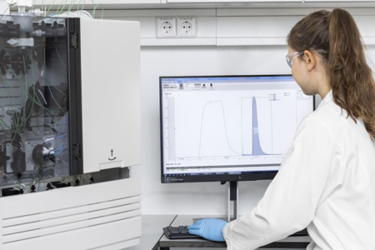Sartobind® Rapid A: High Binding Capacity At Short Residence Times

Membrane chromatography is a well-established technology in bioprocessing. It is routinely used in the capture of large particles, such as viruses and viral vectors, as well as in polishing steps for the removal of DNA, HCPs, and virus. One hallmark of membrane chromatography is high productivity. Because of this, the technology is currently attracting renewed attention to address possible bottlenecks in intensified processes.
Limitations in productivity frequently lead to mAb capture by protein A resins to be described as a bottleneck in downstream processing. Recent developments, such as simulated moving bed or multi-column chromatography, drive the industry toward complex solutions with enhanced risks but only limited productivity gains.
Rapid Cycling Chromatography (RCC), in combination with a newly developed base membrane, will be a game-changer in downstream processing. Sartobind® Rapid A, operated in Rapid Cycling Chromatography mode, provides high binding capacity at residence times of seconds. Learn what makes this novel membrane a suitable tool to solve the bottleneck in downstream processing, namely the mAb capture step.
Get unlimited access to:
Enter your credentials below to log in. Not yet a member of Pharmaceutical Online? Subscribe today.
